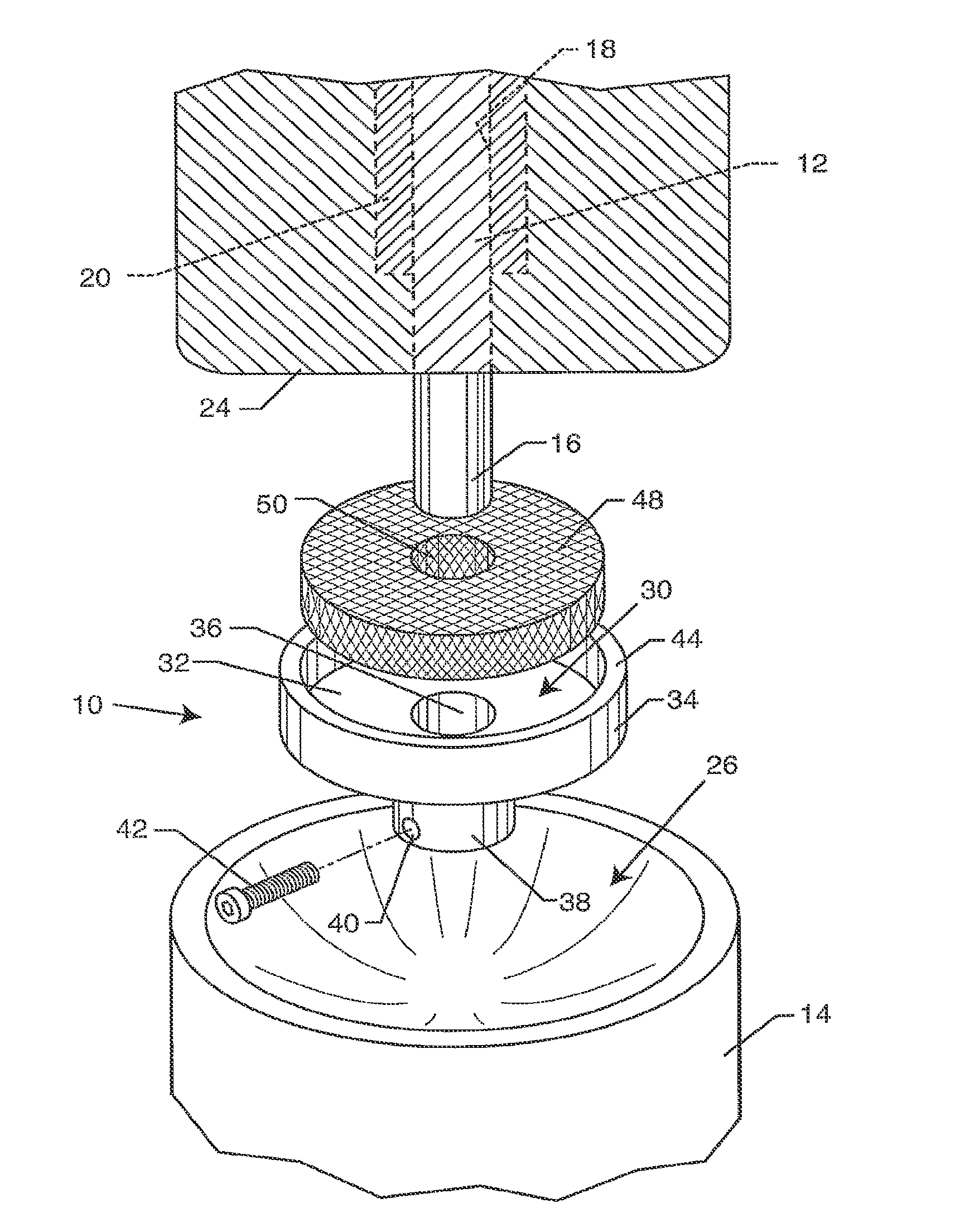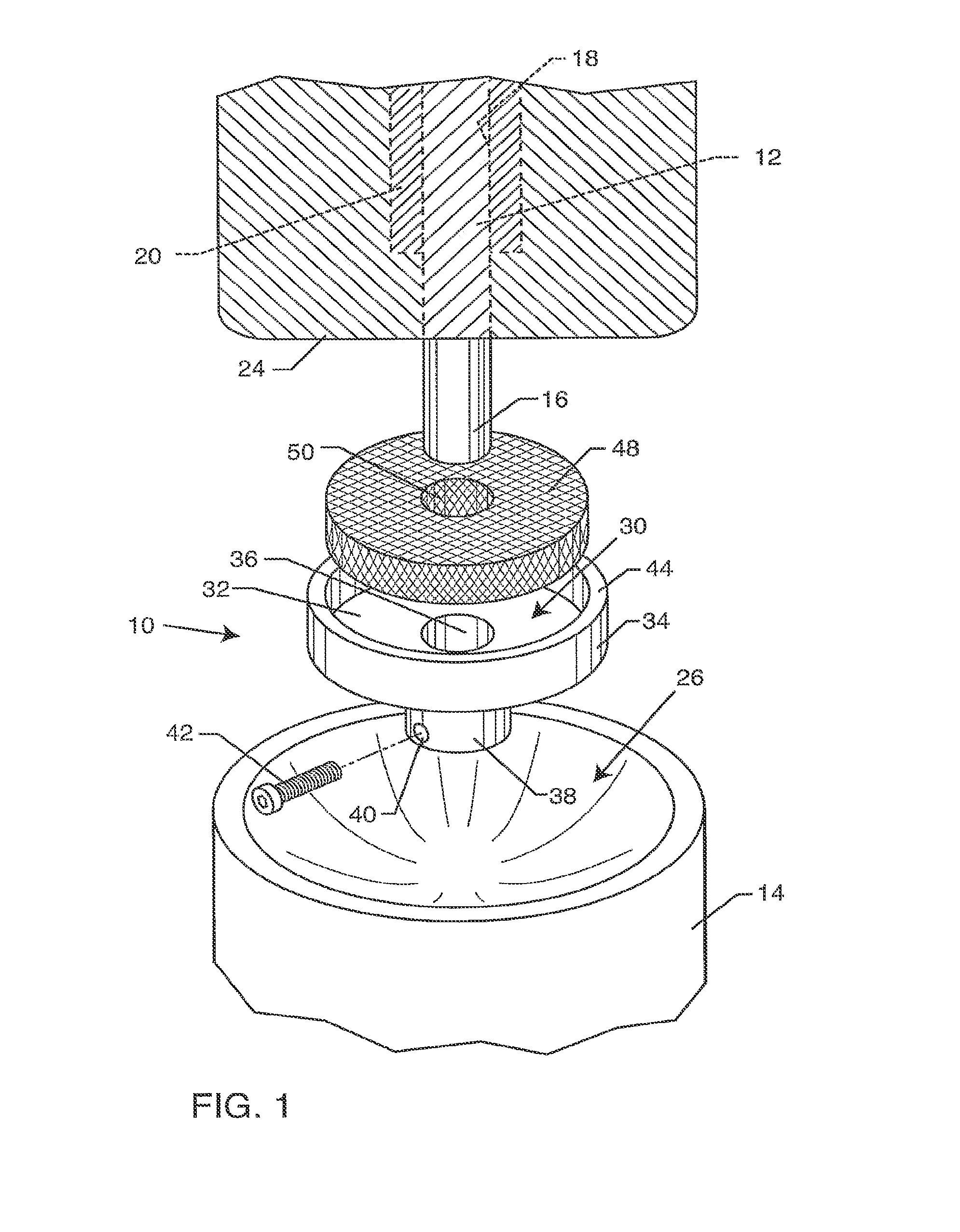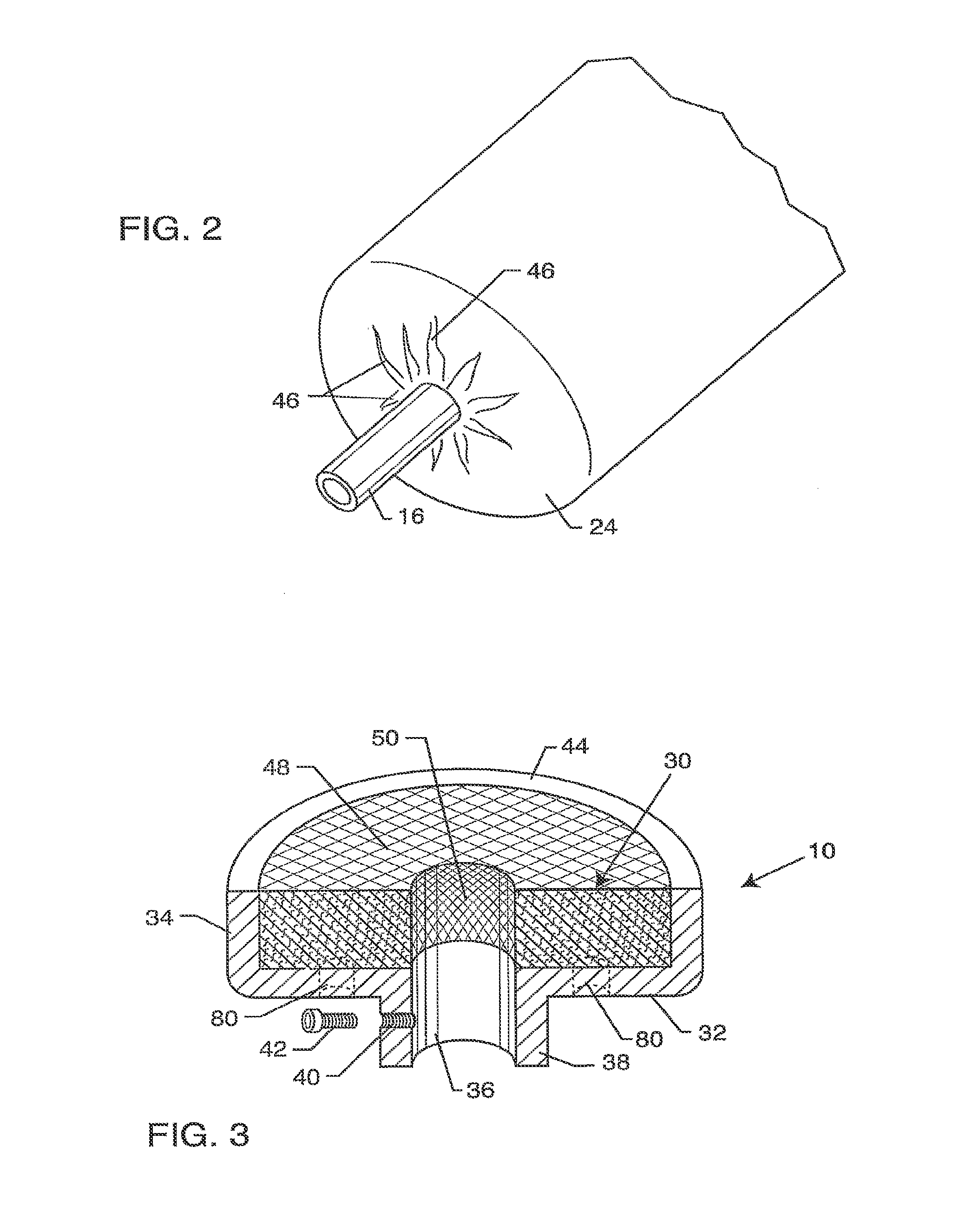Antimicrobial containment cap for a bone anchored prosthesis mounting
a technology of antimicrobial containment and prosthesis, which is applied in the field of antimicrobial containment cap for bone anchored prosthesis mounting, can solve the problems of limited success of arrangement, unsuitable soft tissue interface structure for this purpose, and association of socket-type prosthetic limbs, so as to safeguard the tissue-pin interface from infection. , the effect of quick and easy periodic removal
- Summary
- Abstract
- Description
- Claims
- Application Information
AI Technical Summary
Benefits of technology
Problems solved by technology
Method used
Image
Examples
Embodiment Construction
[0019]As shown in the exemplary drawings, an antimicrobial containment cap referred to generally in FIG. 1 by the reference numeral 10 is provided for use with a bone anchored mounting system of the type having an implanted mounting post 12 designed for secure and stable attachment to an external or exoskeletal prosthesis 14, such as a prosthetic limb or the like for an amputee. The containment cap 10 carries and retains a selected medicant in a position for contacting soft tissue substantially at the exit site or tissue interface with an externally protruding fixator pin or post 16 adapted for removable connection to the external prosthesis 14. The containment cap 10 is designed for significantly reducing or eliminating risk of infection at this soft tissue interface with the externally protruding fixator pin 16.
[0020]The antimicrobial containment cap 10 of the present invention is particularly designed for use with external or exoskeletal prosthetic fixation or mounting systems of...
PUM
 Login to View More
Login to View More Abstract
Description
Claims
Application Information
 Login to View More
Login to View More - R&D
- Intellectual Property
- Life Sciences
- Materials
- Tech Scout
- Unparalleled Data Quality
- Higher Quality Content
- 60% Fewer Hallucinations
Browse by: Latest US Patents, China's latest patents, Technical Efficacy Thesaurus, Application Domain, Technology Topic, Popular Technical Reports.
© 2025 PatSnap. All rights reserved.Legal|Privacy policy|Modern Slavery Act Transparency Statement|Sitemap|About US| Contact US: help@patsnap.com



